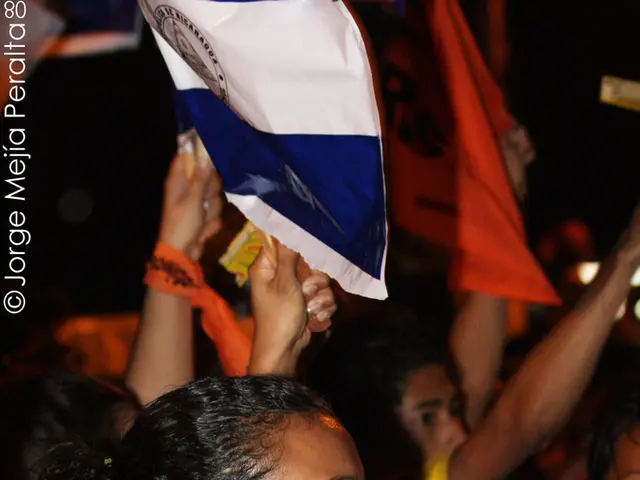Unveiling Censorship: The Controversial "Constellation of Complicity" Exhibition in Thailand
China Accuses Thai Art Exhibition of Falsifying Views on Tibet, Xinjiang, and Hong Kong Policies
The cultural landscape of Southeast Asia has been under the spotlight recently, with the censorship of an art exhibition titled "Constellation of Complicity: Visualising the Global Machinery of Authoritarian Solidarity" making headlines.
The Art Exhibition and the Censorship
Opened on July 24, 2025, at the Bangkok Arts and Cultural Centre, the exhibition featured artworks by artists in exile, primarily from regions like Tibet, Xinjiang, and Hong Kong. The event aimed to shed light on themes of authoritarian governments and their global collaborations.
However, the exhibition faced a significant hurdle when several artworks related to China's policies on Tibet, Xinjiang, and Hong Kong were removed or altered at the request of the Chinese embassy. This included the removal of a multimedia installation by a Tibetan artist and the censorship of terms such as 'Hong Kong', 'Tibet', and 'Uyghur', along with the names of the artists[1][2][3].
The Influence Factor
The censorship appears to be a result of pressure from Chinese officials, with the Chinese embassy in Thailand reportedly playing a pivotal role. This incident underscores China's capacity to exert diplomatic influence over cultural affairs in Southeast Asia[2][3][4].
The Reactions and Implications
The incident has sparked discussions about China's attempts to suppress dissent and control narratives concerning its policies, particularly in regions like Southeast Asia. It also raises concerns about the challenges faced by artists and galleries worldwide in critiquing authoritarian regimes without facing censorship or diplomatic backlash[4].
The event serves as a testament to China's growing influence in the region and its impact on artistic expression and freedom. As Southeast Asian countries navigate their relations with China, the delicate balance between economic cooperation and political sovereignty remains a pressing issue[1][2][3].
- The Chinese foreign ministry accused the exhibition of distorting Chinese policies and undermining China's core interests and political dignity[5].
- The foreign ministry also stated that the promotion of 'Tibetan independence', 'East Turkestan Islamic Movement', and 'Hong Kong independence' has no market internationally and is unpopular[6].
- Sai, the co-curator of the exhibition, is an artist from Myanmar who goes by one name[7].
- The Chinese foreign ministry neither confirmed nor denied that the Chinese embassy was behind the removal and alteration of artworks[8].
- The exhibition features works by artists in exile and has a theme of authoritarian governments[9].
- The co-curator, Sai, claimed that if the allegations about ethnic minority causes were true, there would be no need for censorship or threats of compliance[10].
- Sai also stated that China's actions show it is engaging in political manipulation beyond its borders[11].
- The Chinese foreign ministry's statement suggests a sensitive topic for discussion regarding China's policies on Tibet, Xinjiang, and Hong Kong[12].
- The exhibition in Thailand showcases artworks related to Tibet, Xinjiang, and Hong Kong[13].
Read also:
- Critics harshly condemn decreases in humanitarian relief funds by MEPs
- Trump associates intensify Balkan influence as MAGA ideology expands into Europe
- Far-right factions aim for significant victories in upcoming local UK elections
- 100-day milestone: US president boasts self-accomplishments, offers pledge consequently








